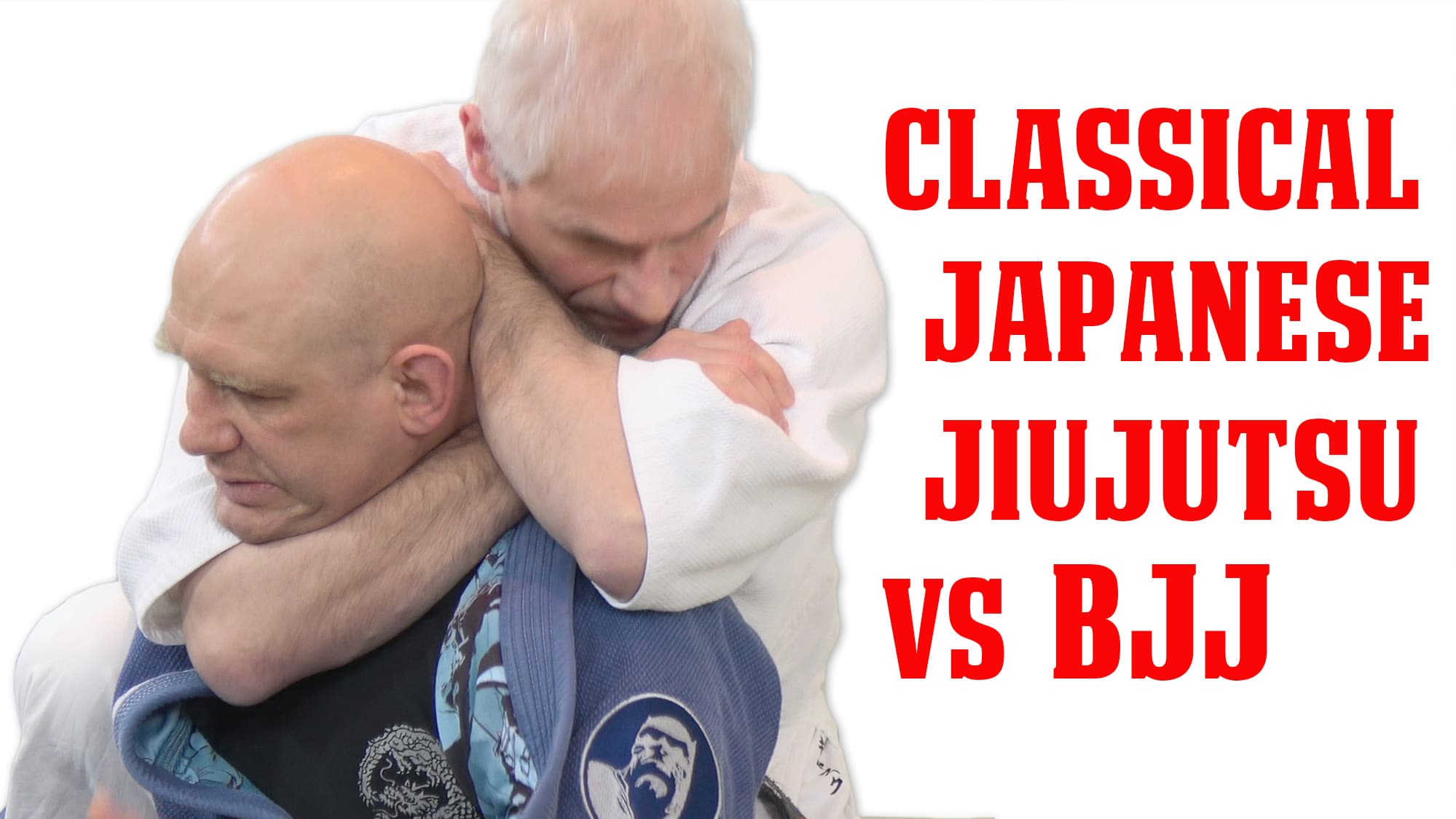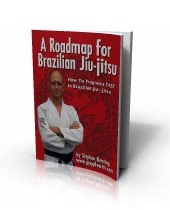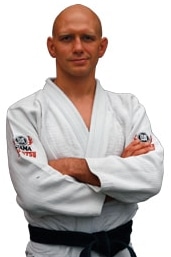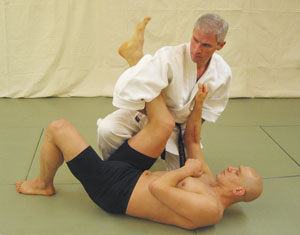
BJJ (Brazilian Jiu-jitsu) is undeniably the most popular grappling system on the planet right now.
But BJJ came from Judo, and Judo came from the traditional Japanese Jiujitsu systems. So there’s a direct lineage from Japanese Jiujitsu (aka Jujitsu or Jujutsu) to BJJ.
Both arts contain chokes, pins, armlocks and leglocks, so what’s the difference?
There are differences in both the training methods, and in the way that some of the techniques are applied.
Every martial art contains different techniques, training methods and training equipment. Of these three factors the most important difference between the traditional Japanese and modern BJJ is in the training methods.
The traditional systems place a lot of emphasis on, well, tradition.
Japanese Jiujitsu typically doesn’t include a lot of sparring. Since samurai no longer fight on battlefields with full armour the preservation of the art has become paramount. There’s not a lot of room for innovation and every teacher tries to pass on the knowledge in the same way he was taught.
There are 5 levels of training to make a martial art functional, and in my opinion Japanese Jiujitsu tends to focus on levels 1, 2 and maybe 3 (solo training, partner training with low resistance, partner training with higher resistance).
Brazilian jiu-jitsu, by contrast, spends a TON of time in levels 4 and 5 (contested situational sparring, and partner sparring with many techniques), and this pressure testing makes it possible to apply the techniques under very high levels of stress and pressure.
And all this sparring makes BJJ a continually evolving martial art. Every few years there’s a new addition to the arsenal (flying attacks, berimbolos, the modern leglock game, etc.) and the BJJ of 10 years from now will look different than the BJJ of today.
Does that mean that traditional Japanese Jiujitsu has nothing to offer BJJ or the modern martial artist?
Not at all!
Although the training methods themselves may not be as effective there’s still a lot of insight that can be gained by looking at the techniques themselves.
Traditional Japanese Jiujitsu evolved in a very different, and very violent, period of history. They reflect an environment in which almost everyone was armed, where you always had to worry about multiple opponents on the battlefield, and where every clash could potentially be a fight to the death.
The way the techniques are executed often reflect this different reality. For example, you might not do a technique in the most efficient way if using that particular method makes it difficult to disengage from your opponent.
So, for example, you might trade power for mobility, give up some control for the ability to disengage, and/or sacrifice some overall efficiency in order to control the weapon hand.
If you begin to understand these tradeoffs then you might just start thinking about your BJJ techniques in a different way, especially if you ever have to apply your skills in a self defense situation!
Therefore I would like to give you three additional resources to dive a little deeper into this subject…
1 – Episode 108 of The Strenuous Life Podcast: Brazilian Jiu-Jitsu vs Traditional Japanese Jujutsu with Alex Kask
In this episode of my podcast I do a deep dive into traditional Japanese Jiu-jitsu with my friend (and black belt) Alex Kask. Alex is a traditional Japanese Ju-Jutsu teacher but also no stranger to modern Brazilian Jiu-jitsu.
We go deep into the techniques and history of traditional Japanese martial arts systems, including modern vs traditional training methods, the Japanese ‘Warring States’ period, historical challenge matches, the importance of wrestling in an environment with weapons and armour, and much more!
This podcast episode, along with all my others, are available on my Strenuous Life Podcast, which you can subscribe to with a few easy clicks! Choose your audio player below and click on it to open up The Strenuous Life Podcast and from there, you can click to subscribe, or simply search for this episode which is episode # 108.
- Apple Podcasts (the purple app on your iPhone)
- Google Podcasts (the new google podcast app)
- Spotify (it’s free)
- Stitcher,
- Soundcloud,
- Google Play
Alternately, you can click on the embedded audio player below to listen (however, you run the risk of missing future episodes by not subscribing – but if you’re a gambler then here you go!)
2 – Two Video Examples of How BJJ and Traditional Japanese Jiujitsu Perform Techniques Differently
Nothing beats some concrete examples for driving a point home. Below are two videos I shot with Alex Kask, comparing and contrasting similar techniques performed in two different contexts.
First, from my main Youtube channel, is an example of how you might perform an armbar differently if you were worried that your opponent might pull a tanto and sever your femoral artery…
(Interestingly, this ‘escape’ to the armbar is a little reminiscent of a technique that an Indonesian Silat practitioner might use to get out of a triangle choke.)
And here from my second, more self-defence oriented Youtube channel, is an example of how you might apply the RNC or rear naked choke in a battlefield scenario where the BJJ approach of taking the back, getting your hooks in, and maintaining rear mount might get you killed…
3 – Submission Grappling vs Classical Ju-jutsu, When Cultures and Concepts Collide
Years ago Alex and I took a stab at comparing and contrasting submission grappling vs classical ju-jutsu.
In that article we cover many of the same concepts, and then give a few more examples of how the techniques might be modified to fit the circumstances.
I think it’s still worth a quick read today!
Check out that article on Grapplearts.com by clicking here.
Since You’re Here…
The internet is a big place, and once you click away the odds of you ever coming back to this site are pretty small.
But actually I put out my BEST information in email form. Tens of thousands of people read those emails every day and (I’m told) get a lot out of them.
This service is completely free, and you can easily unsubscribe with a single click at any time if you don’t like what I send out.
Plus by signing up you can download my guide to learning Brazilian Jiu-jitsu (A Roadmap for BJJ) completely for free.
To sign up just enter your best email below and look for the confirmation email (with the download link for the book) to land in your inbox within minutes!
Find out more about Alex Kask and his dojo in Vancouver, Canada, at Shofukan.ca



